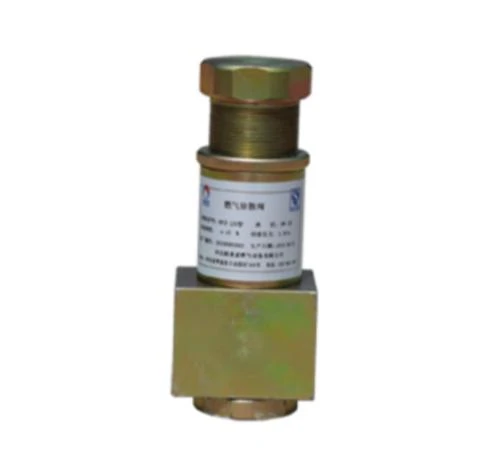
Oct . 20, 2024 21:18
Back to list
Innovative Solutions for Efficient Gas Coalescing Processes in Industrial Applications
The Role of Gas Coalescers in Industrial Processes
In various industrial applications, the separation of gases from liquids and solids is a critical process. Gas coalescers play a pivotal role in enhancing the efficiency of these separation processes, particularly in oil and gas industries, chemical manufacturing, and wastewater treatment. By understanding the functionality, applications, and benefits of gas coalescers, we can appreciate their importance in modern industrial operations.
Understanding Gas Coalescers
Gas coalescers are specialized separation devices designed to remove liquid droplets and solid particles from gas streams. The term coalescing refers to the process by which small droplets combine to form larger droplets, which can then be easily separated from the gas. These devices typically consist of a series of media filters through which the gas passes. As the gas flows through the coalescer, small droplets collide and merge to form larger droplets, which are then removed by gravity or inertial forces.
How Gas Coalescers Work
The operation of a gas coalescer involves several stages, each playing a crucial role in ensuring effective separation. Initially, the gas enters the coalescer and encounters the coalescing media, which is often made from fibrous materials or porous membranes. As the gas passes through this media, the smaller droplets adhere to the fibers, growing larger through the coalescing process.
Once the droplets reach a sufficient size, they become heavy enough to overcome the drag force of the gas and fall to the bottom of the coalescer. This collected liquid can then be drained off, while the purified gas continues through the system. The efficiency of the coalescer is influenced by several factors, including the design of the media, the velocity of the gas, and the properties of the liquid droplets.
Applications of Gas Coalescers
Gas coalescers are widely used in numerous industries. In the oil and gas sector, they are vital for removing water and particulate matter from natural gas before it is transported through pipelines. This not only improves the quality of the gas but also protects upstream equipment from corrosion and fouling caused by water and contaminants.
gas coalescer

In chemical manufacturing, gas coalescers enhance process efficiency by ensuring that gases are free from impurities, which can affect reaction rates and product quality
. For example, in the production of polymers or pharmaceuticals, the presence of moisture or catalyst residues in the gas phase can lead to significant downtimes and product rejections.Moreover, gas coalescers find applications in environmental engineering, particularly in the treatment of industrial effluents. They play a crucial role in removing volatile organic compounds (VOCs) and other hazardous substances from exhaust gases before they are released into the atmosphere, thus aiding in compliance with environmental regulations.
Benefits of Gas Coalescers
The implementation of gas coalescers in industrial systems offers numerous advantages. Firstly, they significantly enhance the quality of gas by effectively removing harmful liquid contaminants, leading to reduced emissions and improved environmental performance.
Secondly, the use of gas coalescers can prolong the lifespan of equipment by minimizing corrosion and fouling. This translates to lower maintenance costs and improved operational reliability.
Thirdly, gas coalescers are typically compact and easy to integrate into existing systems, making them a cost-effective solution for enhancing gas quality. Their versatility allows them to be tailored to various process conditions, adapting to different gas compositions and flow rates.
Conclusion
In conclusion, gas coalescers are essential components in numerous industrial processes, providing effective separation of liquid droplets and solid particulates from gas streams. Their ability to improve gas quality, protect equipment, and comply with environmental standards makes them invaluable in the oil and gas, chemical, and environmental sectors. As industries continue to seek greater efficiency and sustainability, the role of gas coalescers will undoubtedly become even more significant, driving innovations and improvements in separation technologies.
Latest news
-
Safety Valve Spring-Loaded Design Overpressure ProtectionNewsJul.25,2025
-
Precision Voltage Regulator AC5 Accuracy Grade PerformanceNewsJul.25,2025
-
Natural Gas Pressure Regulating Skid Industrial Pipeline ApplicationsNewsJul.25,2025
-
Natural Gas Filter Stainless Steel Mesh Element DesignNewsJul.25,2025
-
Gas Pressure Regulator Valve Direct-Acting Spring-Loaded DesignNewsJul.25,2025
-
Decompression Equipment Multi-Stage Heat Exchange System DesignNewsJul.25,2025

